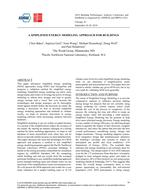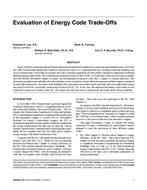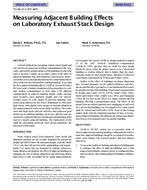Rainwater intrusion in a flat roof during construction is not uncommon and can adversely affect the performance and the
durability of the assembly. In order to study the conditions in a flat roof with construction moisture, a new roof was installed on
a building close to the meteorological station of a field test site in the alpine region of Germany. The glass wool insulation of
the assembly is sandwiched between an aluminum vapor barrier at the inside and an impermeable dark-colored roofing membrane
at the outside. During construction, temperature and humidity sensors as well as moisture pins were installed at different positions
vertically and horizontally, and approximately 2 L/m2 of water was added before the roof was sealed from above. The variants
investigated include different insulation thicknesses and surface colors as well as test sections shaded by tilted PV elements.
The data collected by the temperature and humidity sensors in the roofs were evaluated and compared to the results of hygrothermal
simulations using the simultaneously recorded meteorological data, including long-wave radiation to the sky, as boundary
conditions. The dark-colored roof sections show the largest temperature and humidity fluctuations, including comparatively high
heat fluxes during summer due to conduction and latent heat effects. In the white roof section, which remains much cooler than
the dark one, the moisture stays beneath the roofing membrane and the latent heat effects are comparatively small. Compared
to the white roof, the surface temperature of the dark-colored section is lower during daytime and higher at night.
Citation: Thermal Performance, International Conference, 2010
Product Details
- Published:
- 2010
- File Size:
- 1 file , 2.5 MB
- Product Code(s):
- D-BUILDINGSXI-44


